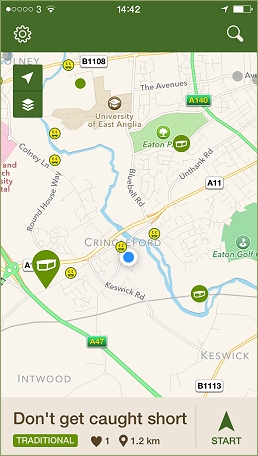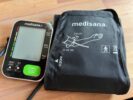The Blog Subscribe
My Geocaching Summer

So this summer I thought I’d try something new to do with the family. Whilst pondering what this was The National Trust put out their 50 things to do before you’re 11 and 3 quarters campaign and as I have a daughter basically that age I thought I’d give it a look.
One of the things that you could download from their website was the checklist of all the things that there were to do. There were all the usual things like climb a tree or visit a castle but one activity that caught my wifes eye was geocaching but she didn’t know what it was so I explained the concept and surprisingly enough she thought it was worth further investigation.
Now if you don’t know what geocaching is the simplest way to explain it is to simply quote the definition from Wikipedia which is:
"Geocaching /ˈdʒiːoʊˌkæʃɪŋ/ is an outdoor recreational activity, in which participants use a Global Positioning System (GPS) receiver or mobile device and other navigational techniques to hide and seek containers, called "geocaches" or "caches", anywhere in the world.
A typical cache is a small waterproof container containing a logbook. The geocacher enters the date they found it and signs it with their established code name. After signing the log, the cache must be placed back exactly where the person found it. Larger containers such as plastic storage containers (Tupperware or similar) or ammunition boxes can also contain items for trading, usually toys or trinkets of little financial value, although sometimes they are sentimental. Geocaching shares many aspects with benchmarking, trigpointing, orienteering, treasure-hunting, letterboxing, and waymarking".
So once we had gotten our head arounds what needed to be done we set ourselves up to go and look for our first cache. The best place to find out what you need is the official Geocaching website where it introduces you to the process and we found it very useful. You can find caches near you via the web site but we found that the best way to find what’s out there is to use the official Geocaching app for iOS and Android although there is loads of software out there for all kinds of devices. The app I got for my iPhone is the ‘Intro’ app and it’s totally free. This will only show you caches that are near you. If you want to see all of the caches on the planet you need to upgrade to the premium service which is £6.99 although I prefer the free app as it’s just nice to pull up the app when you’re somewhere and find a surprise cache.
So with app in hand we were ready to go and find our first cache. So on a sunny Monday morning we fired it up and were surprised to find 5 or 6 caches within 2 miles of our house so we set off.
When you use the app it will give you an interactive map of the surrounding area and the caches available. You then simply click on the cache you want to find and it will give you a variety of information. Firstly it tells you about the cache itself and a little bit about its origins. It also tells you about the area in which it is hidden such as history and interesting facts which is great when you’re out walking and just want to know a little bit more about where you are. There is also a clue about exactly where to find it but these are usually cryptic so as not to make it too easy as well as how far it is away from you. It also tells you what type of cache it is what size. Another handy section is about the activity of those who have previously found or have tried to find the cache in the past. This is sometimes a help but geocachers don’t generally give too much away to make it fun for everyone else.
Once you have selected your cache you can then begin tracking it. The inbuilt compass on the iPhone tells you which direction to head and counts down the distance as you get closer. Once you’re within 30 feet of the cache it is more useful to rely on your instincts rather that the GPS. As caches are normally well hidden you need to do some detective work but you are asked to be mindful of Muggles (non-geocaching folk) so as not to reveal the location.

We first headed to our local church for the first cache but were unsuccessful in locating it so we gave up and headed to next one which was at our doctors surgery and after a bit of rooting around and obviously trying not to be detected we found it! It was just a bottle cap held on by a magnet but for us it was like finding buried treasure. We’d found our first cache! We then took the knowledge from this find and reapplied it back at the church and it paid off. We signed the logbook and off we went to track down the rest and we’ve been doing it all summer since.
The next thing we are going to do is to build our own cache. There are various ways to do it. You need to decide what type of cache you want make whether it be a micro cache or a larger container type one where you can stash loads of goodies to swap with other geocachers. Once you have made your cache you then need to go and hide it and record the GPS coordinates along with a description, hint and any other information you think is relevant. You can then submit this to the official Geocaching website for approval and if it meets the criteria it will be approved and people can have the pleasure of finding it for years to come. Also you need to make sure that you maintain your cache so visit it regularly.
So if you fancy something to do and that will get you out and about it’s well worth giving geocaching a look.
I'm just adding this video because the first 3 seconds crack me up.
Author

Paul Wright
 BTN Rebrands as The American Tech Network
BTN Rebrands as The American Tech Network Patrice’s Holiday Gift Guide: Books
Patrice’s Holiday Gift Guide: Books Patrice’s Holiday Gift Guide: Health
Patrice’s Holiday Gift Guide: Health tsoHost saved my bacon
tsoHost saved my bacon My first Raspberry Pi adventure
My first Raspberry Pi adventure